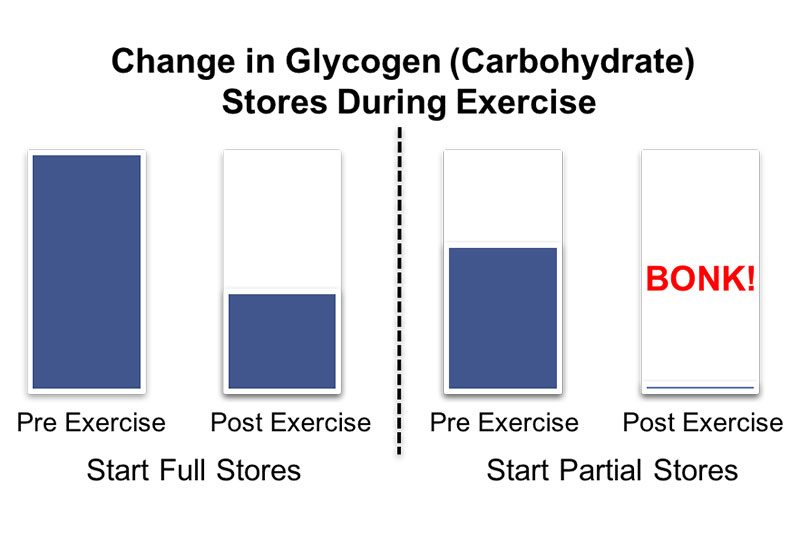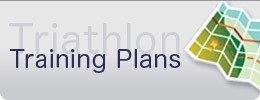Understanding How Bonking Occurs
Have you ever done a long bike or run training session or race and suddenly “hit the wall” or “blown up”?
There’s a sudden feeling of fatigue and low energy. Your legs feel heavy and your movement feels forced. You may feel light-headed or dizzy. You must slow down. This is bonking.
Why Does Bonking Occur?
What’s happening is that you’ve depleted the glycogen (carbohydrate stores) in your muscles and liver. If you use the analogy of glycogen as the gas in your gas tank, you’ve run out of gas.
Why does this happen? Let’s start with the fuel types available to the muscles for energy and how much energy each can provide.
The estimated energy storage for a 70-kg (154 lb) non-obese male1 is:
- Fat: 71,640 kcal (calories)
- Protein: 24,000 kcal
- Carbohydrates: 1,700 kcal
The body stores a lot of energy as fat (true even if you’re a skinny person). The body uses fat as a primary fuel source during low to moderate intensities. At higher intensities, the body’s process to use fats (as free fatty acids) for energy can’t keep up with the demand for energy so your body shifts more and more to carbohydrates as the primary fuel source.
Proteins broken down into amino acids are also available as a fuel source, but they are not a preferred source and provide only a small contribution to fuel for the muscles. Amino acids will be used more when glycogen levels are low.
Carbohydrates (stored as glycogen) are the fastest available energy source because they can be broken down quickly to provide energy. Notice that they are also the most limited. They can be depleted.
When you bonk, you’ve essentially run low on glycogen so the body is forced to use slower processes of breaking down fat (primary source) and protein to provide energy. Less energy is available so the muscles and the body slow down.
How Do You Prevent Bonking?
Ensure you have enough glycogen stores to fuel you through your training session or race. There are three important time periods to do this:
- Before exercise: Like a car, taking a long road trip, start your training session with a full tank of fuel by increasing your glycogen stores (ingest carbohydrates in the hours before exercise). This is especially important if you’ve already done exercise recently and your glycogen stores are already partially depleted. See the image above.
- During exercise: By consuming carbohydrates in the form of sports drinks or other sources like gels during exercise, you keep adding fuel to the tank. The challenge will be to take in enough calories to maintain energy levels without taking in too much stuff that will cause GI distress.
- After exercise: Consuming carbohydrates (and protein) after training will replace glycogen stores prior to your next training session. Note that if you are depleted, glycogen replenishment takes time – up to 24 hours if completely depleted assuming adequate carbohydrate intake.
I’ll explore more specifics around preventing bonking (and recovering from bonking) in my next blog post.
Happy training,
David
—

1. Berardi, John and Ryan Andrews, The Essentials of Sport and Exercise Nutrition: Certification Manual, Precision Nutrition, 2012, p. 135


